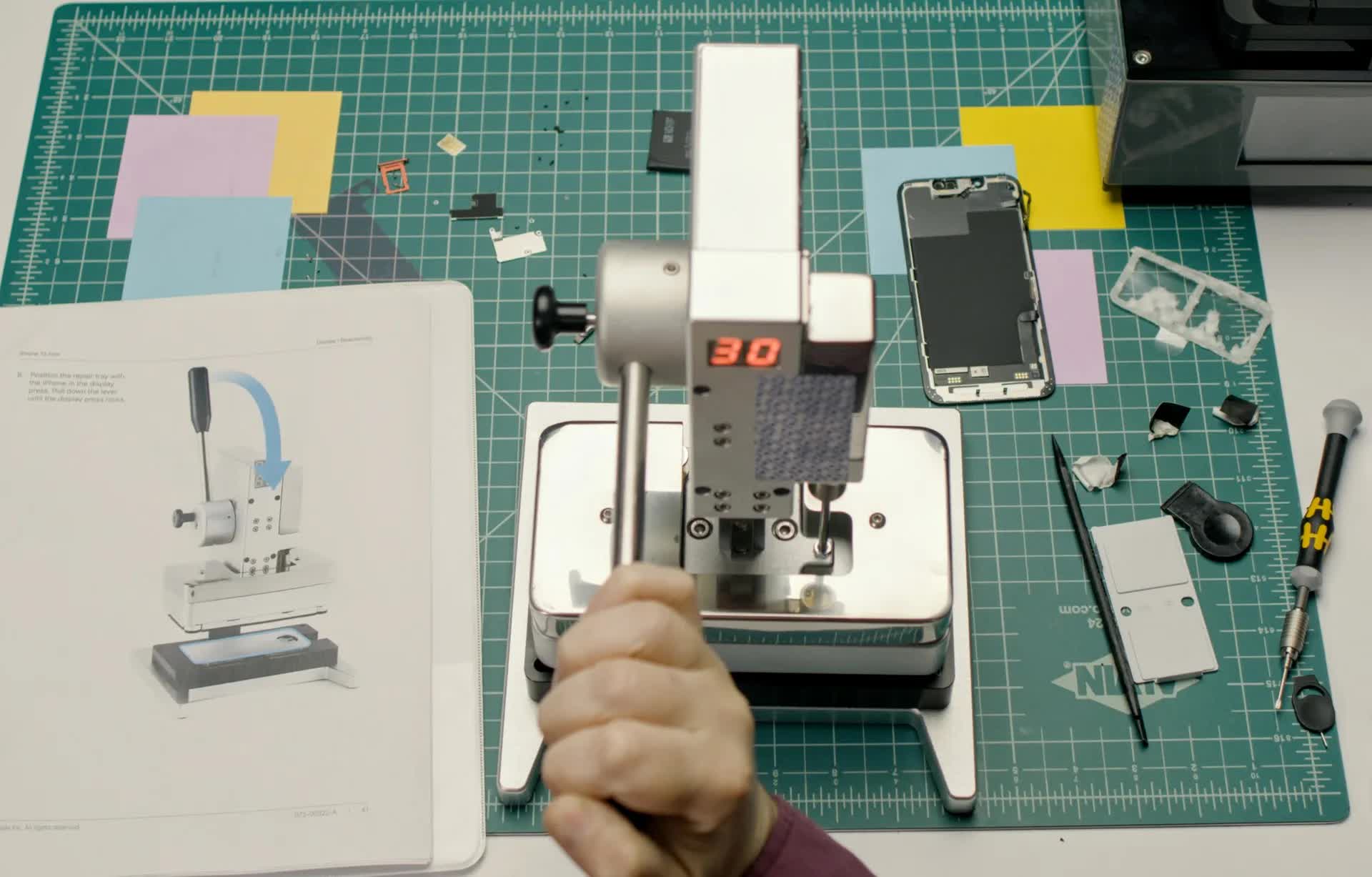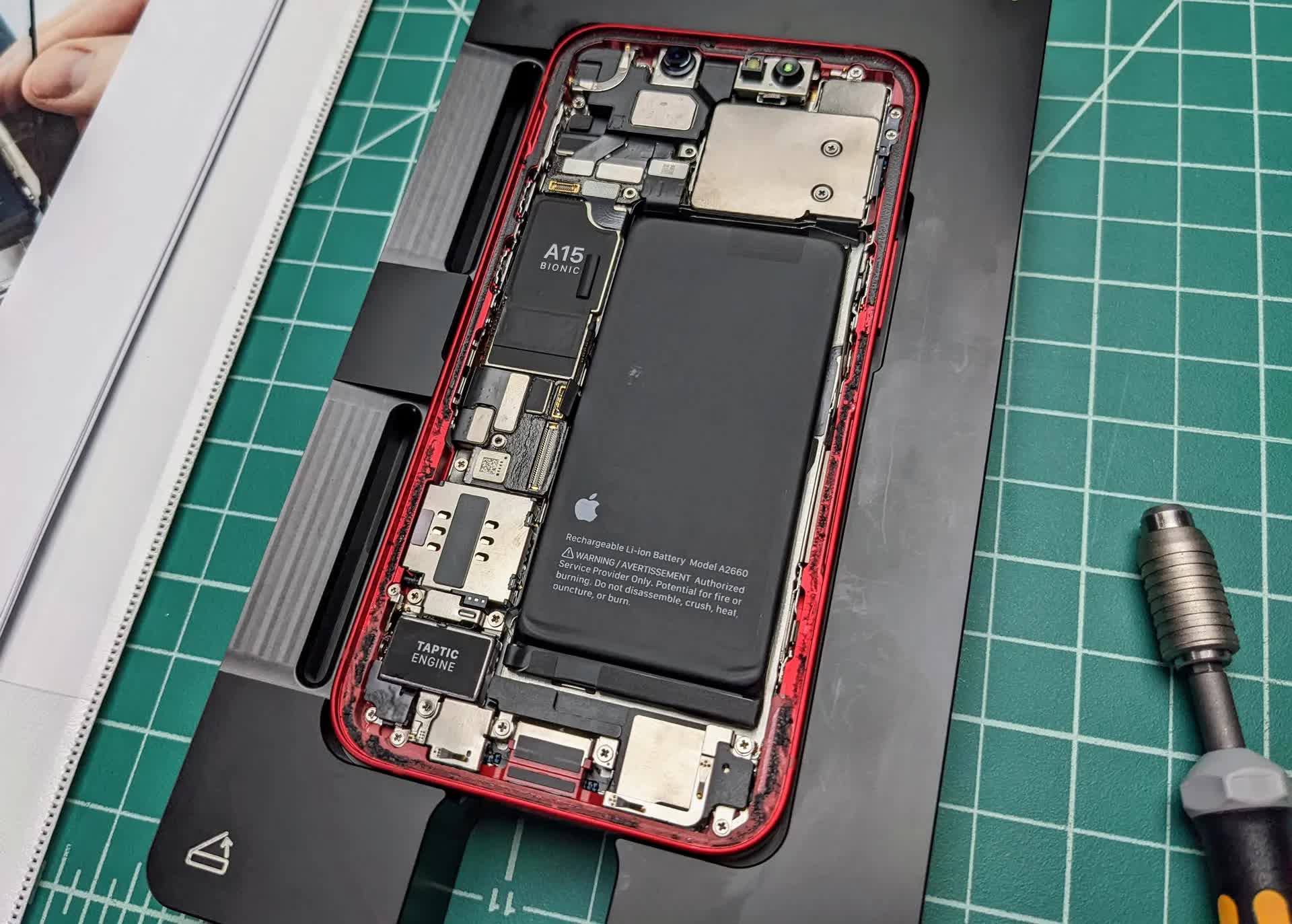A hot potato: If you missed the announcement, Apple's self-repair service is a parts and tools storefront masquerading as a concession to the right to repair movement. Its manuals are technical, obtuse, and only make sense if you're using Apple's special tools – which are not user friendly and happen to arrive in two suitcase-sized pelican cases.
The Verge's Sean Hollister took the service for a test run this week and found that it's even worse than it appears on paper. It has many problems, the most outrageous of which is the pricing: he paid $69 for a new battery for his iPhone Mini, the same price that the Apple Store charges for a battery and its installation; and $49 to rent the Apple certified toolkit for seven days. Crazy as that is, it gets worse.
Apple also requires a $1,200 credit card hold for the toolkit, which is forfeited if the toolkit isn't returned within the seven days. Except for Hollister, the battery arrived two days after the toolkit, so he only had five days to complete the repairs, which were about as unfriendly and difficult as you'd expect.

Read his article for a blow-by-blow recount, but basically, it involved a ton of ambiguous instructions, extremely fiddlesome parts, and tools that didn't work the first time.
And then his iPhone didn't recognize the battery as genuine. It wasn't meant to. After installing new parts, you need to contact a third-party company and give them remote control of your device for the parts to be validated.
At that point, you might as well have started your own repair shop.
All that said, I'm still looking forward to trying the self-repair service myself when it arrives in my region. If you're a hardware enthusiast, too, you'll understand the appeal of borrowing expensive tools and fooling around with broken devices. But the process is clearly too convoluted and unpleasant for the average Apple customer to attempt, and Apple should be embarrassed by it.
Image credit: The Verge
